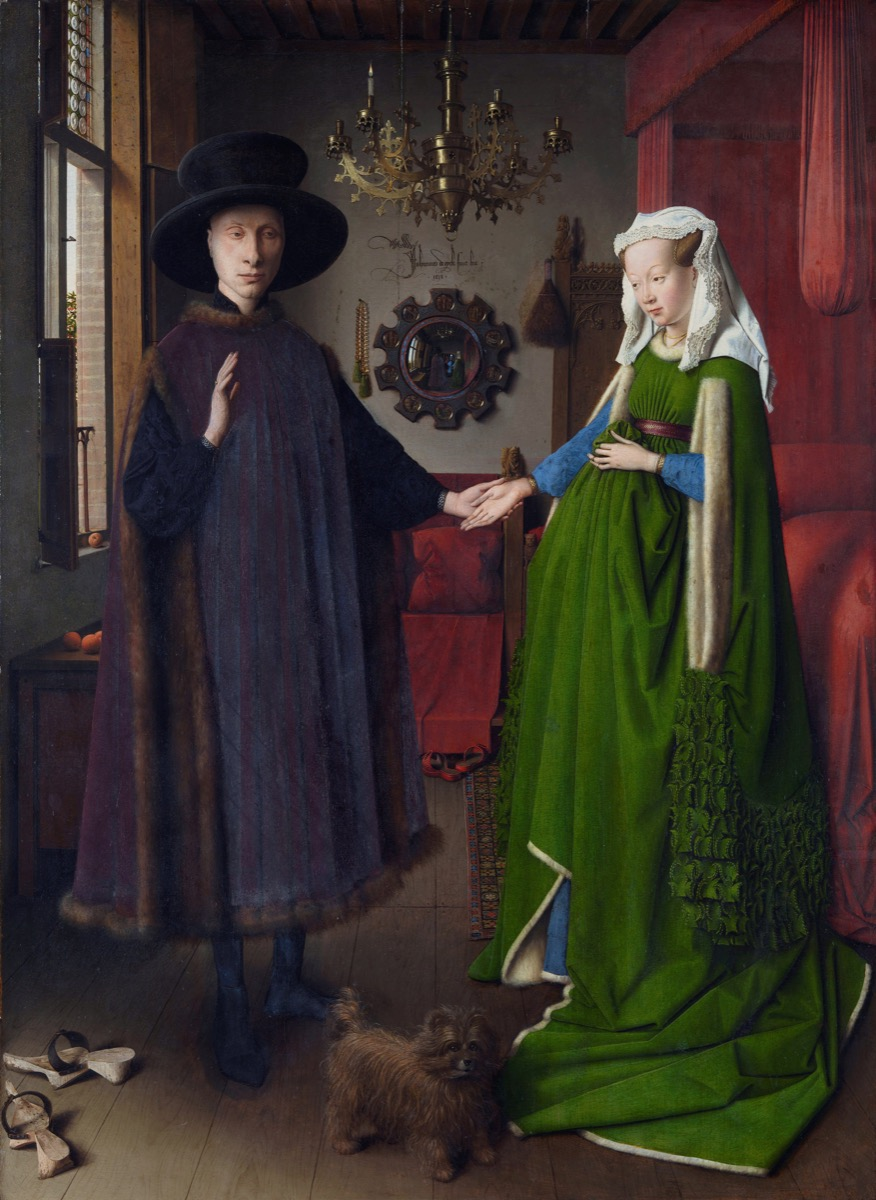Texture and Dimension - Dondis
Texture
Texture enriches the visual experience by specifically evoking another sense, touch, by exhibiting variations on the surface of a material Though texture frequently serves as a stand-in for touch, texture can either have actual tactile qualities or be purely an optical experience; Likewise, texture can be recognized by either touch or just sight or some combination of both.
In Jan van Eyck’s painting “Arnolfini Portrait”, though it is a 2 dimensional image, there is an implication of touch/the hope of a tactile experience, particularly in the texture of the clothing that the couple is wearing. Just looking at the texture of the fabric and furs, we can observe the heaviness of the green fabric that the woman is wearing as well as the softness of the fur trim on both the wardrobe of the man and woman. In this case, texture of the dense fabric and expensive fur helps to communicate the opulence and luxury of the couple’s life and family, helping to give visual clues to who these people are.

Dimension
Like texture, dimension aims to represent the qualities of three-dimensions on a two-dimensional visual format. Since dimension only actually exists in the real world, in art, dimension is frequently dependent on illusions and implying depth with the help of our two eyes, which create stereoptic sight. Some of these techniques include manipulating light and shade through “chiaroscuro” to produce depth, or by using vanishing points to follow the many rules of perspective and how large objects should be if its a certain distance away.
One example of techniques for dimension is Pablo Picasso’s cubist style—this is his painting called “Portrait of Dora Maar”. Picasso replicates the 3-dimensional person and environment onto a 2-dimensional plane in a way that looks like multiple angles/perspectives of the face all displayed at once. In a sense, Picasso wasn’t intent on creating a convincing illusion of the third dimension, but often painted on a flat canvas and strongly suggested a third dimension.
